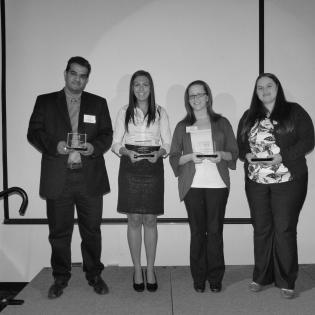Philanthropy and Citizenship—Hand in Hand
Learners are introduced to the concept of philanthropy, as giving time, talent, or treasure and taking action for the common good. They evaluate the role of philanthropy in the smooth functioning of government, and describe the role of families in shaping a democratic society.
The learner will:
- define philanthropy.
- identify acts of philanthropy in everyday life.
- evaluate how effectively the government would function without the help of volunteers.
- Video segment, Philanthropy Is… (see Bibliography)
- Philanthropy in Government Song (handout)
- Roles in Society Handout for student groups (handout)
- Venn diagram (handout)
- philanthropy: The giving of one's time, talent or treasure or taking voluntary action for the common good
- citizenship: the state of being an inhabitant or member of a community; includes entitlement to rights and responsibility to the common good
- Ellis, Susan J. and Katherine H. Noyes. By the People. San Francisco: Jossey-Bass Publishers, 1990.
- “Philanthropy Is . . .” Video [https://www.youtube.com/watch?v=7_VfRdxuae8&list=PL0cYSdjkPk9Zz6cDGt3YkZUnGQvZaiohI&index=5]
Instructions
Anticipatory Set:
Write "philanthropy" on the board. Show the video "Philanthropy is..." (7:20). (You may choose to show only a short portion.) Ask students to pronounce and define the word on the board.
Define "philanthropy" as giving and sharing of one's time, talent or treasure for the common good. Discuss the definition of "common good."
Discuss how individuals are involved in acts of philanthropy on a daily basis. Compile the brainstormed ideas of the students on the board.
Explain that philanthropy is seen in all segments of society. Philanthropy is necessary for our society to run smoothly. Philanthropy is necessary for our government, at the national, state, and local levels, to function smoothly.
Give students copies of the Roles in Society handout. As you read through it ask the question: "What level of government does this apply to - national, state or local levels of government?" Remind the students of the 10th Amendment of the Constitution that lays out Federalism.
Lecture on how the government would fall short without the help of the nonprofit sector and volunteers giving of their "time, talent and treasure." Government can't meet all our needs (and we don't want them to). The nonprofit sector fills in where business, family, and goverment don't meet needs.
Guide students to a conclusion that we need all sectors doing their share for the common good. Ask for other examples in life where the four sectors work together for the common good (child care, health care, research, environmental stewardship).
Place two intersecting circles on the board or see Venn Diagram (handout). On the left side of the diagram, define philanthropy. On the right side, define citizenship. (Students should copy the diagram on their own papers.) In the middle of their own diagram have students provide examples of philanthropic activities that reflect responsible citizenship. (See definitions in Vocabulary above.
Examples may include advocating for civil rights, feeding hungry, and caring for the environment.) Allow students five minutes to complete the diagram. Discuss the completed diagrams as a class. Post the diagrams in the room to enable students to see each other's examples.
Lead a class discussion on the following questions:
- Is philanthropy a duty or a responsibility of citizenship? (A responsibility because a duty is something required by law.)
- Is philanthropy essential to being a good citizen? Why? (Yes, because if people were not willing to give time, talent, or treasure then societal needs not addressed by the government would continue to go unmet.)
- Why are all four sectors needed in our democratic, market-based society?
Handouts
Philanthropy Framework
-
Strand PHIL.I Definitions of Philanthropy
-
Standard DP 06. Role of Family in Philanthropy
-
Benchmark HS.1 Discuss the role of family life in shaping a democratic society.
-
Benchmark HS.2 Compare and discuss the interaction of families, business, government, and the civil society sector in a democratic society.
-
Benchmark HS.3 Identify how subgroups and families in society demonstrate giving, volunteering, and civic involvement.
-
-
-
Strand PHIL.II Philanthropy and Civil Society
-
Standard PCS 07. Skills of Civic Engagement
-
Benchmark HS.2 Discuss a public policy issue affecting the common good and demonstrate respect and courtesy for differing opinions.
-
-
